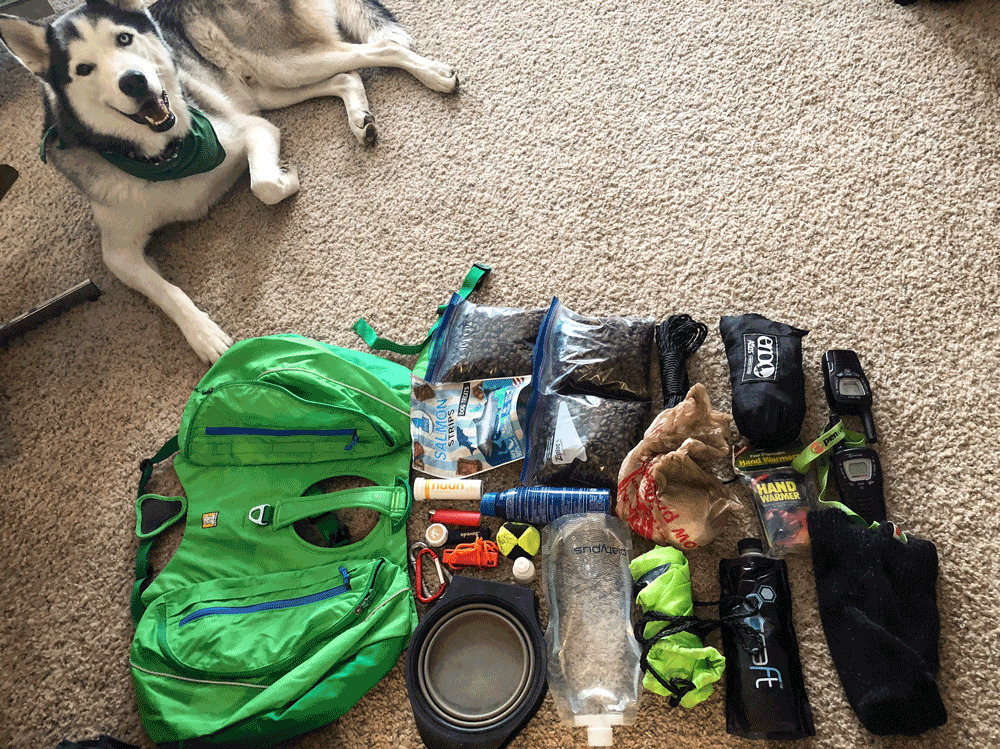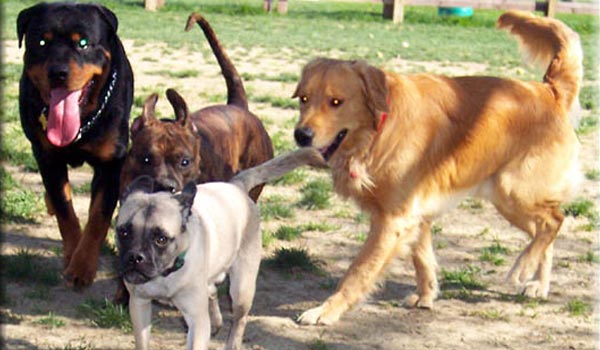Have you ever watched your dog interact with other dogs at the park and wondered what’s going on? Or maybe you’ve got multiple pups at home, and you’re curious about their relationship dynamics? Well, I’ve been researching dog behavior for years, and I’m excited to share what I’ve learned about how dog packs actually work!
Dogs are fascinating social creatures with complex pack behaviors that date back to their wolf ancestors. Understanding these dynamics not only satisfies our curiosity but helps us become better pet parents too. So let’s dive into the world of dog packs!
The Basics of Dog Pack Mentality
Dogs are pack animals at heart. Before they became our beloved pets, they ran in groups that helped them survive in the wild. While our domestic dogs have come a long way from their wild ancestors, they still retain many of those instinctual pack behaviors.
What Exactly Is a Pack?
A pack is basically a social community where dogs are closely connected to each other. These groups operate on principles of:
- Cooperation
- Clear communication
- Defined roles
- Social bonding
- Safety in numbers
For our pet dogs, their “pack” isn’t limited to other dogs. Humans, cats, and other household animals can all become part of their perceived pack. This is why your dog sees you as family!
The Hierarchy: Who’s in Charge?
One of the most important aspects of pack structure is the hierarchy. In the wild, this hierarchy ensures order and reduces conflicts. Let’s break down the typical roles:
Alpha Dogs (The Leaders)
The alpha dogs stand at the top of the hierarchy They’re the decision-makers and leaders of the pack Despite what some people think, alpha dogs aren’t typically aggressive tyrants! Instead, they’re confident, balanced leaders who
- Make decisions for the group
- Lead during hunts
- Have first rights to food
- Maintain order
- Resolve conflicts
In a domestic setting, a healthy pack dynamic usually means the human is the alpha, not the dog.
Beta Dogs (The Supporters)
Beta dogs are like the “middle management” of the pack. They:
- Support the alpha’s decisions
- Help maintain order
- Often react first to potential threats
- Act as enforcers when needed
Omega and Other Pack Members
The remaining dogs in the pack fit into the structure below the alphas and betas The omega dog is at the bottom of the hierarchy, but plays important roles such as
- Providing social play
- Diffusing tension
- Maintaining group harmony
It’s worth noting that these positions aren’t always fixed. Pack dynamics can be fluid with positions shifting based on age health, situation, and individual behavior.
Why Pack Structure Matters for Dogs
Pack structure provides numerous benefits for dogs, which is why these behaviors have persisted even in domesticated pets:
Safety
Being part of a pack makes dogs feel secure. In the wild, packs protected members from predators and other dangers. For our pets, this translates to feeling safe when they know their place in the family “pack.”
Efficiency
Working together makes survival easier – finding food, raising young, and defending territory all become more manageable with a coordinated group.
Emotional Well-being
Dogs are social creatures that crave companionship. Being part of a pack provides emotional stability and prevents loneliness. When dogs are isolated for too long, they often develop behavioral problems because they’re missing that pack connection.
Signs of Pack Behavior in Everyday Dog Life
You can actually observe pack behaviors in your own dogs! Here are some common examples:
- Group play: Dogs play together to strengthen bonds, often mimicking hunting behaviors
- Body language communication: Constant signals through tail position, ear position, and eye contact
- Walking formation: Notice how dogs often follow a natural order on walks
- Resource management: Who eats first, gets the best sleeping spot, etc.
- Conflict resolution: How disagreements get settled between dogs
You and Your Dog: The Human-Canine Pack
If you have a dog, they see you as part of their pack – and ideally, as their leader. This has major implications for your relationship:
Clear Communication
Dogs thrive with consistency. If rules keep changing, they get confused about their place in the pack structure. This is why training experts emphasize the importance of clear, consistent expectations.
Leadership (Not Domination)
Being the “alpha” to your dog doesn’t mean being harsh or intimidating! It means being a calm, confident leader who provides:
- Clear boundaries
- Consistent rules
- Direction and guidance
- Safety and security
As pack leader, your dog is looking to you to be their guide. As Peter Bonney from Bonnies Dog Training puts it, “If your puppy could tell you just one thing, it would be, ‘PLEASE BE MY ALPHA. Please be my pack leader and teach me what you want me to do.'”
Quality Time
Pack animals need social interaction. Walks, play sessions, and cuddle time strengthen your bond and fulfill your dog’s need for pack connection.
Common Pack Structure Issues in Homes
When pack structure isn’t clear, problems can arise:
1. Aggression
If a dog feels they need to take on the alpha role because no one else is, they may become aggressive. This can manifest as growling, snapping, or biting, especially when they feel their perceived leadership is challenged.
2. Anxiety and Fear
Dogs without clear pack leadership often feel insecure. This can lead to separation anxiety, excessive barking, whining, or destructive behaviors.
3. Resource Guarding
A dog might aggressively guard food, toys, or spaces if pack hierarchy isn’t established. This stems from the dog’s perceived need to control resources, normally a job for the alpha.
4. Disobedience
Why would a dog listen to someone they don’t see as their leader? This can make training incredibly frustrating.
5. Excessive Marking
Dogs may start marking inside the house to assert dominance and establish territory when they’re confused about leadership.
The Debate: Are Dog Packs Really Like Wolf Packs?
While understanding pack structure is helpful, it’s important to acknowledge there’s ongoing debate among experts:
Some experts believe domestic dogs have evolved significantly from wolves, and applying strict wolf pack dynamics to our pets oversimplifies their behavior. They suggest focusing more on positive reinforcement and individual needs rather than strict hierarchy.
Others maintain that while dogs have evolved, their pack instincts remain deeply ingrained and understanding this hierarchy is crucial for a balanced relationship.
The truth probably lies somewhere in the middle. Dogs do retain pack instincts, but their behavior is also shaped by domestication, breeding, and individual personality.
Building a Healthy Pack Structure at Home
Whether you have one dog or several, establishing a healthy pack dynamic is important. Here are some practical tips:
For Single-Dog Homes:
- Be consistent with rules and boundaries – dogs need to know what to expect
- Provide regular exercise and mental stimulation – a tired dog is more likely to accept their place
- Control resources – you should determine when feeding, walks, and play happen
- Use positive reinforcement – reward good behavior rather than punishing bad behavior
- Establish yourself as the decision-maker – decide when activities begin and end
For Multi-Dog Homes:
- Respect the natural hierarchy – allow dogs to establish their own order (unless aggression occurs)
- Feed in order of rank – alpha dogs typically eat first
- Avoid favoritism – this can create confusion about hierarchy
- Address conflicts calmly but firmly – don’t let dogs “sort it out” if it becomes aggressive
- Give individual attention – each dog needs one-on-one time with you
My Experience with Pack Dynamics
I’ve seen firsthand how understanding pack structure can transform relationships with dogs. When I first brought home my second dog, there was tension as they figured out their positions. By respecting their natural hierarchy while maintaining my position as leader, peace was established much more quickly.
The most important lesson I’ve learned is that being a pack leader isn’t about dominance – it’s about providing security through clear, consistent leadership. Dogs actually WANT you to lead – it makes them feel safe and secure!
Understanding how dog packs work gives us valuable insight into our pets’ behavior and needs. By recognizing that our dogs view us as part of their pack, we can build stronger relationships based on mutual trust and respect.
Remember that every dog is unique. While pack dynamics provide a helpful framework, your approach should be tailored to your individual dog’s personality and needs.
So next time you’re interacting with your furry friend, think about your role in their pack. Are you providing the leadership they’re looking for? Are you communicating clearly and consistently? By embracing your role as pack leader, you’ll create a happier, more balanced relationship with your dog.
What pack behaviors have you noticed in your dogs? I’d love to hear about your experiences in the comments below!

Know when your dogs are exhibiting pack behavior

Not understanding or recognizing pack behavior in the family pet is the root problem for many, many behavioral issues in dogs. Pack behavior is a genetic component to every dog. Pack behavior can get worse if pet owners dont establish groundwork, if dogs are added to the family pack, or if the dog is moved into a new home.
As a general rule the people who find themselves on this web page need my course titled Dealing with Dominant and Aggressive Dogs.
Dog Behavior 101: Understanding Pack Dynamics
FAQ
How does a pack of dogs work?
In nature, there are three positions in the dog pack ‘ front, middle, and back ‘ and each dog will gravitate to its natural place based on relative dominance, with the pack leaders always in front. Each position has its own function within the pack as they work together to survive.
How does a dog pack hierarchy work?
In a wolf or wild dog pack, there’s a clear hierarchy. At the top, there are the alpha male and female, followed by beta (secondary) and omega (lowest-ranking) individuals. Each member knows its place in the hierarchy and plays a specific role within the pack.
How many dogs are considered a pack?
While a wolf pack requires a breeding pair and their young, the definition of a dog pack is more flexible: two or more dogs are generally considered a pack, with more dogs in a household leading to more complex social dynamics. In a domestic setting, a human owner leads the pack.
How does a dog become alpha in a pack?
Behaviorists’ Perspective on the Alpha Dog Concept
Rather, it is influenced by various factors such as socialization, desensitization, and counter-conditioning. These processes play a crucial role in shaping the dog’s character, leading to a more prominent and assertive position within a pack or social group.
